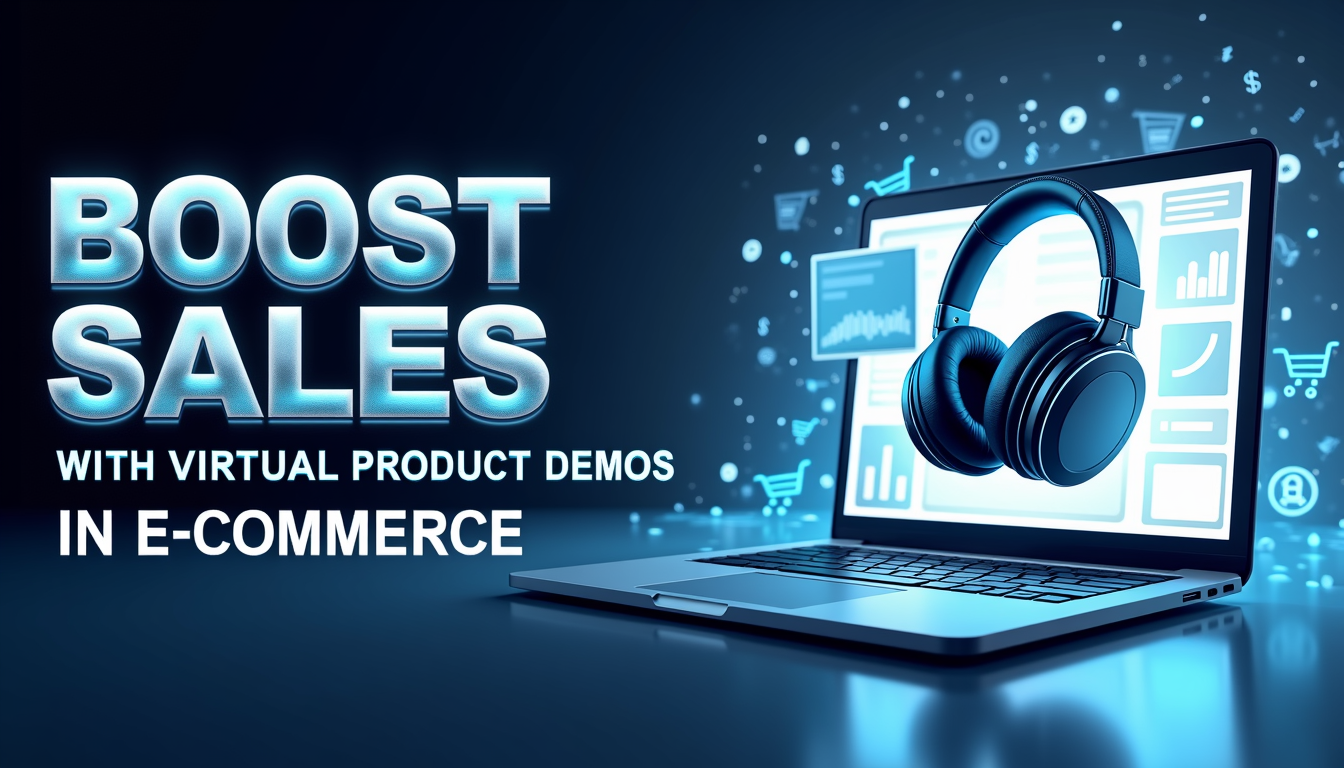
Boost Sales with Virtual Product Demos in E-Commerce
As online shopping becomes more popular, businesses are constantly looking for ways to stand out and attract customers. One of the most effective ways to do this is by creating interactive shopping experiences. Virtual product demos are an exciting tool that can help businesses showcase their products in a new and engaging way. For Indian e-commerce businesses, using virtual demos can not only boost sales but also improve customer satisfaction and loyalty.
In this blog, we will explore the power of virtual product demos, how they enhance the online shopping experience, and practical tips for using them to increase sales.
Why Virtual Product Demos Matter for Indian E-Commerce Businesses
With millions of online shoppers in India, the e-commerce market is growing fast. But one of the challenges of shopping online is that customers can’t touch or try products before purchasing. In a physical store, customers can see, feel, and test products. Online retailers need to find ways to overcome this limitation and make their products come to life for shoppers.
Virtual product demos allow customers to interact with products before buying them. These demos can be in the form of videos, 3D views, or augmented reality (AR) experiences. They give customers a better understanding of the product’s features and help them make informed purchasing decisions. For Indian e-commerce businesses, this interactive experience can lead to more sales, improved customer trust, and better retention.

How Virtual Product Demos Boost Sales
1. Creating a Realistic Shopping Experience
One of the main advantages of virtual product demos is that they make online shopping feel more like a physical store experience. When customers can see a product from all angles or interact with it virtually, it creates a more engaging and realistic shopping experience. This can help customers feel more confident about their purchase and reduce hesitation.
For example, in the fashion industry, virtual try-ons allow customers to see how clothes will look on them. In electronics, virtual demos can show how a product works and its key features. These types of demos help customers make decisions faster and lead to more sales.
Practical Tip: Consider adding 360-degree views or videos of your products to your website. If possible, integrate AR features that allow customers to try products virtually.
2. Improving Customer Confidence
One of the biggest challenges in e-commerce is building trust with customers. Virtual product demos help address this by allowing customers to see exactly what they are buying. This transparency increases customer confidence and reduces the likelihood of returns or cancellations.
When customers can visualize the product and understand its features, they are more likely to feel comfortable making a purchase. Virtual demos allow you to highlight product details that might be difficult to showcase with static images alone.
Practical Tip: Use clear and high-quality videos or 3D images that show your product from every angle. Focus on features that customers may not immediately understand from traditional product images.
3. Personalizing the Shopping Experience
Personalization is a key factor in building strong relationships with customers. Virtual product demos can be tailored to individual customer preferences, creating a unique shopping experience. For example, if a customer is shopping for skincare products, they can use a virtual demo to see how the product works on different skin types.
This personalized approach not only helps customers feel more connected to the brand but also increases the likelihood of repeat purchases. When customers see that a business understands their needs, they are more likely to return for future purchases.
Practical Tip: Use customer data to offer personalized virtual demos. For example, provide product recommendations based on past purchases or browsing history, and create demos that show how the product meets their specific needs.

4. Reducing Cart Abandonment
Cart abandonment is a common problem for e-commerce businesses. Customers often add items to their cart but leave without completing the purchase. Virtual product demos can help reduce cart abandonment by giving customers a better understanding of what they are buying. When customers have a chance to interact with the product virtually, they are less likely to second-guess their purchase and more likely to complete the transaction.
Practical Tip: Include a virtual demo on your product pages to help customers visualize their purchase before they check out. This can increase the chances of a completed sale.
5. Increasing Customer Engagement and Retention
Interactive shopping experiences, like virtual product demos, keep customers engaged with your brand. By offering something more than just a traditional product page, you create an experience that encourages customers to spend more time on your website. This not only increases the chances of a sale but also helps build customer loyalty.
When customers enjoy their shopping experience and feel engaged with the brand, they are more likely to return in the future. A positive experience can also lead to word-of-mouth marketing, where satisfied customers recommend your brand to others.
Practical Tip: Create a seamless and interactive experience on your website. Ensure that virtual demos are easy to use and don’t slow down the shopping experience.

How to Implement Virtual Product Demos in Your E-Commerce Store
- 3D Product Views: Adding 3D views to your product pages allows customers to interact with products and see them from different angles. This is especially useful for products like shoes, furniture, or electronics.
- Augmented Reality (AR): AR allows customers to try products in a virtual space. For example, in the furniture industry, customers can see how a sofa looks in their living room. In the fashion industry, they can see how clothes look on their own bodies.
- Video Demos: High-quality product videos can showcase how a product works, its features, and how it can benefit the customer. These videos can be shared on product pages or social media to attract more buyers.
- Virtual Try-Ons: For fashion and beauty brands, virtual try-ons are a great way to help customers visualize how products will look on them. This technology allows customers to try on clothes, makeup, or accessories without being in the store.
Challenges and Solutions
While virtual product demos are powerful tools, they can come with some challenges:
- Technology Costs: Implementing AR or 3D product views can be expensive. However, as technology advances, these tools are becoming more affordable for small businesses.
- User Experience: Not all customers may be familiar with how to use virtual demos. It’s important to make sure that the experience is user-friendly and accessible to everyone.
Solution: Invest in easy-to-use technology and provide tutorials or guidance to help customers get the most out of the virtual demos.
Conclusion: Boost Your Sales with Virtual Product Demos
Virtual product demos are a game-changer for Indian e-commerce businesses. By creating interactive shopping experiences, you can increase customer engagement, build trust, and boost sales. Customers will feel more confident about their purchases, leading to fewer returns and more repeat business. Virtual demos also allow you to personalize the shopping experience, making it more likely that customers will return to your brand in the future.
As the e-commerce landscape continues to grow in India, interactive shopping experiences will become a key factor in standing out from the competition. If you want to increase sales, reduce cart abandonment, and build strong customer loyalty, virtual product demos are the way forward.












